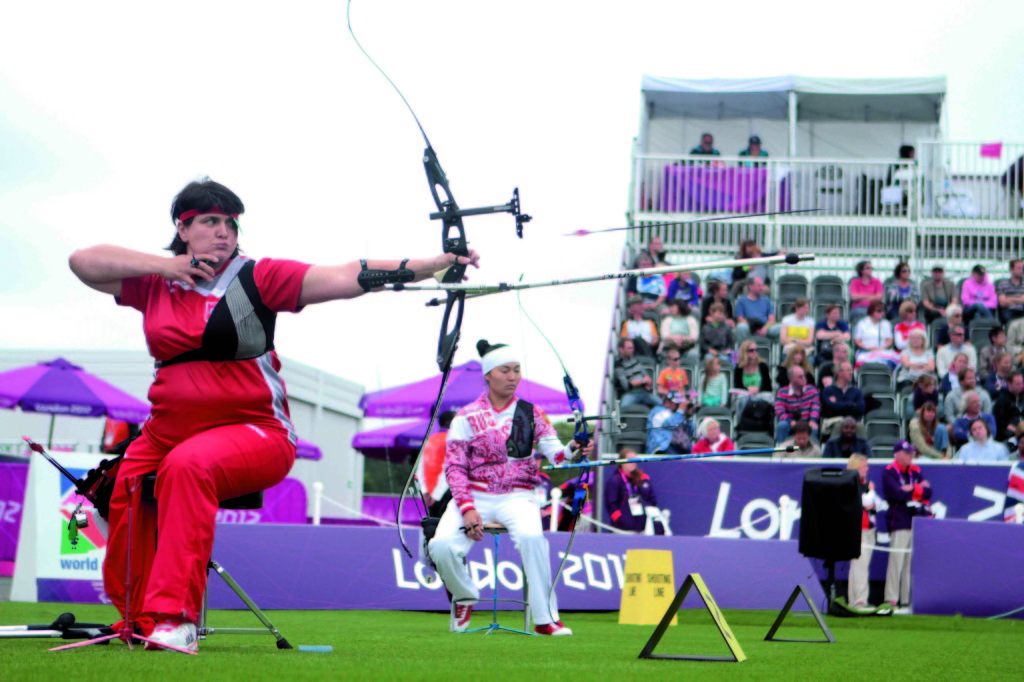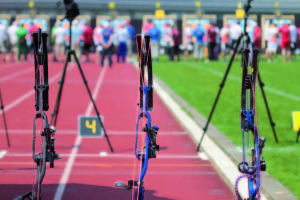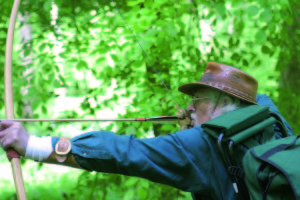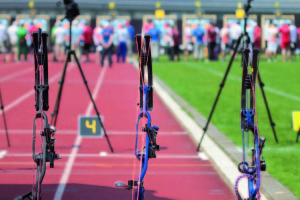
You might have heard the flex of an arrow on release called the ‘Archer’s Paradox’, but it actually has a narrower meaning
The definition of a paradox is that it is a seemingly true statement, or group of statements, that leads to a contradiction or a situation which seems to defy logic or intuition. The paradox relating to archery is “that an arrow will fly in a straight line to a target when it starts off pointing away from the target.”
A complete understanding of the archer’s paradox did not occur until the late 1920s and early 1930s, when work by Robert P Elmer, Paul E Klopsteg, ES Hodgson and Clarence N Hickman was published. Elmer and Klopsteg had developed a working theory by the end of the 1920s and early 1930s, but it took proper slow-motion filming by Hickman to finally determine what actually happens.
Meanwhile, ES Hodgson, of East St Louis, had independently conducted an investigation by means of a shooting machine and published his findings in The Archery Review, in April 1932. Hodgson had built a shooting machine that closely mimicked the way a right handed archer shot, including a means of release that performed in the same way as letting go of the string off the fingers. He devised a means of plotting the string movement and “…he found the string to move first to the left, being half an inch away at two inches … At five inches the string crossed the line of aim and then swung in a long curve on the right side, being more than an inch away at fifteen inches from its starting point, or one foot from the back of the bow. Swinging in to its point of rest it did not stop there but continued by its momentum for more than an inch, at the same time being drawn left, by the arrow nock, to the line of aim. Here it was freed of the shaft, sprang a little in towards its true line, then vibrated backwards…” Hodgson’s article was reproduced in Archery: The Technical Side, which was published in 1947.
We should, at this point, remember that all this work and research was being carried out using longbows of the English type. Even with the advent of steel bows through the decades between 1920s to the 1950s,
the paradox still applied because archers were shooting arrows around the bow.
In the 1950s, the precursors to modern recurve bows started to appear. However, although these new bows shot better and straighter than the old types, the sight window was not cut past centre, so the paradox still had to be taken into account, However, it had been slightly reduced.
With the advent of the modern take-down recurve bows, particularly those with metal handles, bow makers realised that the sighting aperture could now be cut past centre, into a ‘window’. The later advent of the compound bow kept this feature of design. However, this development also required something else to keep the arrow in its correct place, which was initially an adjustable arrow plate, but in turn this was replaced by the cushion plunger, or the pressure button.
This means that the setup of the bow became very different to that of a longbow, with the arrow on a recurve bow being set only very slightly off a straight line to the target, and on a compound bow actually in a straight line to the target. By looking at the setup, it becomes apparent that with modern bows there is no paradox in the old sense, but everyone still refers to it as if it is an accepted fact and assumes that the paradox still applies.
The fact that archers shooting a recurve bow are letting go of the string off their fingers still causes the arrow to bend, due to the inertia of the pile and the sideways movement of the string. The cushion plunger button absorbs the initial bend into the bow, which helps keep the arrow on line. But this bending movement should no longer be referred to as the archer’s paradox, because there is no paradox involved. What you have is what should be referred to as the ‘initial movement of arrow flight’. Compound bows, in particular, have no ‘paradox’. Due to the action of using a release aid, any bending movement of the arrow at the initial moment of release will take place in the vertical plane. Again, you cannot overcome the fact that the nock end of the arrow must move before the pile end due to the moment of inertia of the pile, thus causing the arrow to bend.
It is important in terms of shooting well that archers have an understanding of how an arrow bends on release. They also need to understand the importance of arrow spine and how this affects how much an arrow bends and whether the arrow is suitable for their particular bow. But, as I have already said, they should not be confused by referring to it as the archer’s paradox, because it is not: it is the initial movement of arrow flight. The archer’s paradox remains the preserve of traditional shooters with arrows that must shoot ‘round the bow’.




Excellent. Someone has beaten me to it in explaining the evolution of the term from the true meaning of “paradox” to arrows bending. Well done.
even with a window. cut past centre. the point of the arrow is still outside of centre. this outside of centre setting means that its still parradox. granted not as much as a longbow. but still…
Great article. What would be the minimum fps I should look for when buying a compound bow for hunting? I am looking at these: http://www.shoppingblox.com/huntingbows
Modern compound bows, being tuned mostly centershot, do not use archer’s paradox like the old bows without a cut out to allow for center shot (Old compounds that didn’t have a cut out for center shot still used archer’s paradox to shoot straight even though the arrow (for right handed archers) pointed to the left).
However, spine IS still important. There will always be SOME flex when the arrow is shot. As such, if the arrow is too stiff, that first flex will effect the arrow much more than any following oscillations. Basically, if you get one good flex, which ever way the arrow flexed will set the arrow attitude for the rest of the flight. e.g. lets say the arrow bends up in the middle…tip points down. with no significant oscillation in the opposite direction, the arrow will leave the bow as though it was shot nock high.
If the arrow is the correct spine, it will have the proper amount of flex to allow some oscillations to counter the original flex.
We don’t need as much as the old bows do…but still need some to balance flight.
This is why you see on some arrow charts the largest diameter arrows suggesting that you put a VERY heavy tip (because the spine is so rigid) to get proper arrow flight.
Otherwise, we could all just use the heaviest spine arrows, and have perfect flight. But that is NOT the case.
I really like your post. It’s very nice article and I’ve got more info. Thank you for sharing
Some people still shoot modern compounds with fingers, although short bows make that uncomfortable. The finger release changes the initial flex to be horizontal. But it’s not clear to me it that necessarily means the arrow must initially point to the left of the target before being released.